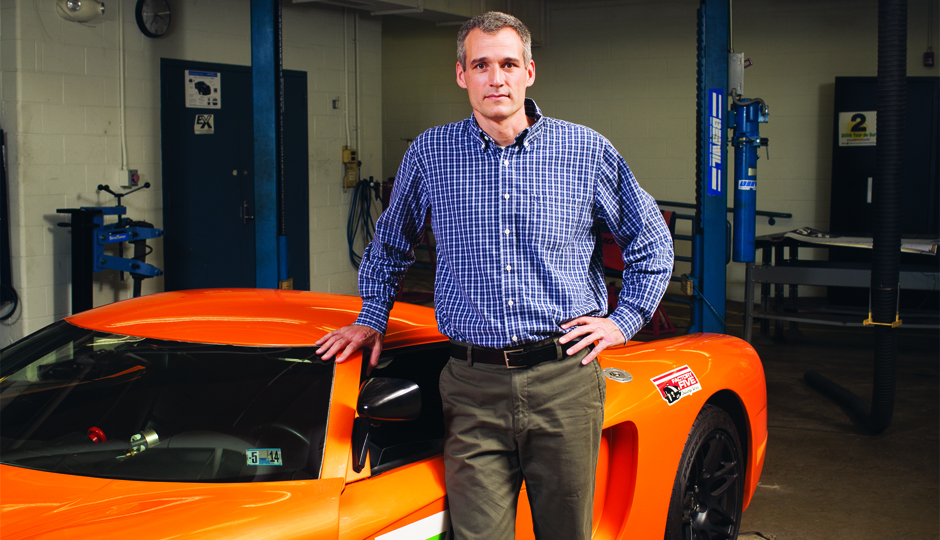West Philly’s Quest for the Automotive X Prize
The bell rang at 3 p.m. Kids burst from their second-floor classrooms at the West Philadelphia High School Academy for Automotive and Mechanical Engineering and leapt down the stairs. Most filed past the metal detector onto the street, where a trash bin spilled colorful garbage, but a few stayed behind, making their way into a drafty garage and slapping down their backpacks with purpose. A vaguely fungal smell emanated from racks of motor fluid, tools and spare parts, and a sign straight out of the ’50s read ALL SKIRTS & SHORTS MUST BE WORN KNEE LENGTH. It was February 2010. On a wall, a lime-green banner was emblazoned with a quote from Henry Ford: “Thinking always ahead, thinking always of trying to do more, brings a state of mind in which nothing is impossible.”
Several students entered a small, brightly lit classroom to the side of the garage and dug into a cache of snacks. Others clustered around Simon Hauger, 40, a spindly white guy with an icy thatch of prematurely gray hair. He stood next to a black sports car. The body was removed for now, sitting off to the side, meaning that the steel frame beneath was visible, along with two separate propulsion technologies: an electric motor and battery pack in the front, and a diesel engine in the back. This was a hybrid vehicle of original design, built by Simon and the kids to travel the energy equivalent of 100 miles on a single gallon of gasoline. If they could get to 100 MPGe (the “e” stands for “equivalent”), they had a chance at winning a $10 million contest for the Automotive X Prize. They called themselves the West Philadelphia Hybrid X Team.
Simon said he wanted to work on the sports car’s turbocharger.
“What’s a turbo?” he asked Diamond Gibson, 17, a native of Liberia.
“A turbo, it uses air,” Diamond said.
“It’s like a fan or something,” said Azeem Hill, a thoughtful junior with freckles and thick glasses.
“If I took the fan that I put in the window in the summer, my box fan, and blew air in, would that push enough air?” Simon asked. “No. That only sucks so much air.”
A turbo, he continued, is basically an air compressor—a tool that converts energy into quick bursts of air. The point is to increase the engine’s efficiency by allowing it to squeeze more air into each piston.
“Now, here’s the hard part,” Simon said. “You need to pay attention. Anytime you compress anything, what happens to its temperature?”
“It rises,” Diamond said.
“Right. It gets hotter. And when things get hot, like in a hot-air balloon, what do they want to do?
“Expand,” said Azeem.
“Expand. So our goal for a turbo is to pump air in. So you’re compressing air. It’s getting hot. You’re fighting yourself, right? You need something that cools it off.”
The kids liked Simon; he had a way of relating abstract concepts to the real world. “The way he teaches,” said senior Jacques Wells, “he could teach algebra to a guinea pig.”



